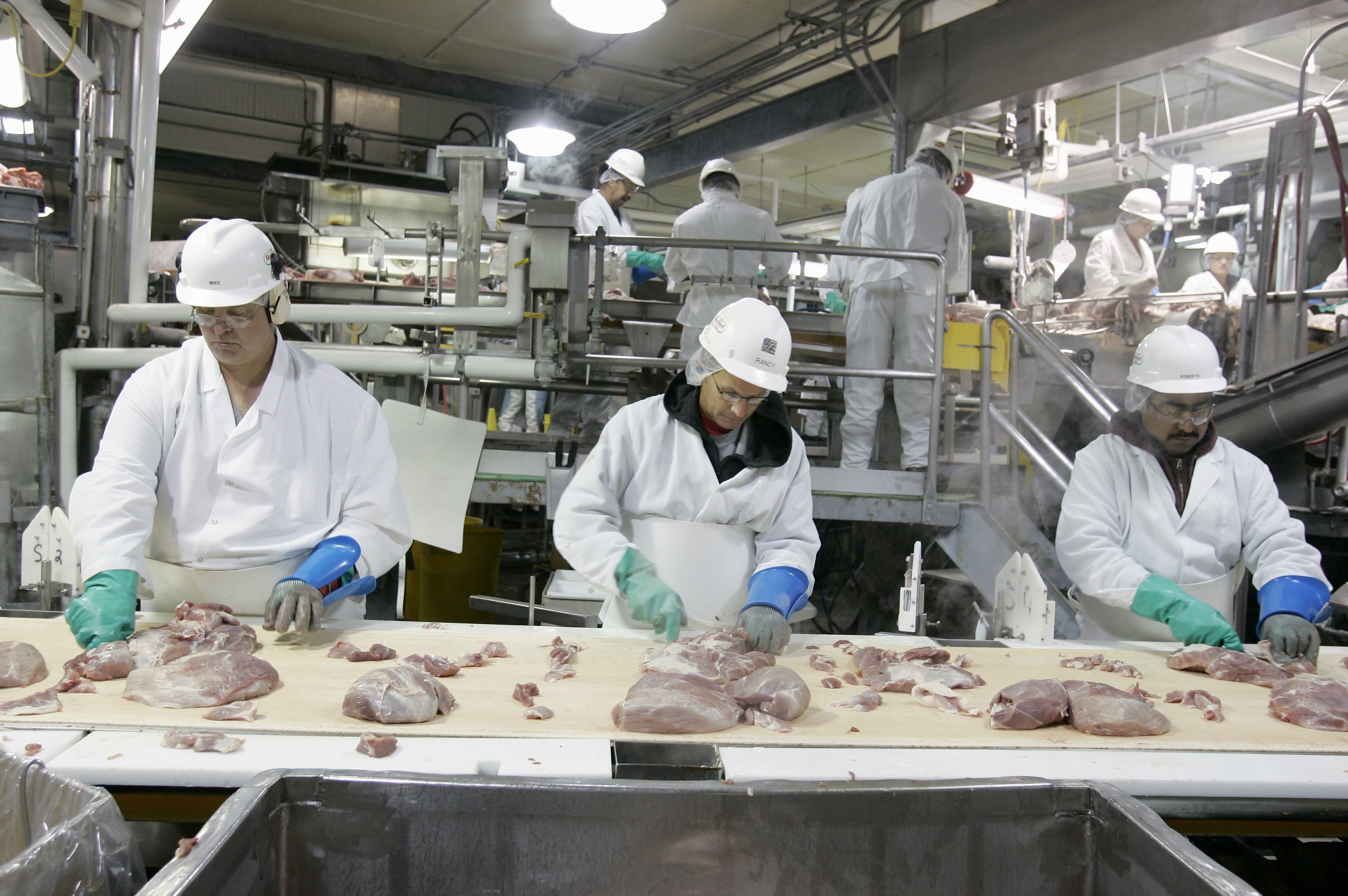Today, the state of the American Dream—the ability of anyone to work hard and get ahead—largely depends on one’s zip code. That is more than a little troubling, given that 97 percent of Americans believe everyone should have an equal shot at success.
As President Obama put it earlier this year: “In this country, of all countries, a person’s zip code shouldn’t decide their destiny.”
But what makes this trend even more problematic, as a new Center for American Progress report indicates, is that now—due to a lack of affordable housing and enduring patterns of residential segregation—the zip code where people live is largely determined by income, race, and ethnicity.
The report’s co-authors suggest that if we want to change this unacceptable status quo we need to work on two fronts: reinvest in impoverished neighborhoods so that residents have access to high-quality housing, jobs, good schools, transportation, and other basics; and ensure that families with low-incomes have access to affordable housing in neighborhoods that already offer residents these resources.
For low-income renters, the affordable housing situation is now a crisis. As Housing and Urban Development Secretary Julián Castro said at the release of the report: “This issue of an affordability crisis on the rental market is real, in big cities and in small towns.”
Indeed, half of all renters in the U.S. spend more than 30 percent of their income on housing (above the threshold commonly defined as “affordable”); and more than a quarter spend over 50 percent of their income. On top of that, the housing that is available is increasingly limited to high-poverty, low-opportunity neighborhoods: 13.8 million Americans now live in neighborhoods where more than 40 percent of residents are poor, nearly double the number of people in 2000.
When low-income families are able to move to neighborhoods that foster mobility, the benefits are clear: the children perform much better academically than their peers in high-poverty neighborhoods; their average annual earnings as adults increase by 31 percent; they are more likely to attend college and less likely to become single parents. There is also marked improvement in physical and mental health, particularly for adults and girls.
Get Talk Poverty In Your Inbox
Quanda Burrell, 30, lives with her 10-year-old daughter and 5-year-old son in Boston where she works full-time as a childcare teacher for infants. She grew up in low-income communities, where there was a lot of drug and gang activity and shootings.
When she was pregnant with her first child, she was couch-surfing with friends and relatives, and briefly lived in two homeless shelters. She then moved to privately-owned, subsidized housing in a mixed-income neighborhood.
“The neighborhood was primarily Caucasian, and quiet,” Burrell said. “That took getting used to.”
Her children haven’t had to face the stressors Burrell dealt with—like how to cross rival gang territories in order to walk to the park; getting robbed at gunpoint when walking home from work during high school; or needing to stay inside of the house “for safety reasons.” Her family has also enjoyed quality childcare and schools, and easy access to services like WIC, a food pantry, and a diaper bank when they have needed help.
“But the number one difference is safety,” she said.
In order to help more low-income families move to high-opportunity neighborhoods, the report recommends establishing a federal law that would prohibit landlords from refusing tenants just because they possess a housing voucher. Additionally, the authors call for the elimination of exclusionary zoning—“ranging from density limits and minimum lot size requirements to community vetoes of new construction”—which limit affordable housing construction and increase racial and economic segregation.
But not every family is going to be able to move to a high-opportunity neighborhood (nor does every family want to relocate), which is why we need to revitalize distressed communities as well.
Secretary Castro and the report’s co-authors point to the Obama Administration’s Promise Zone model as one way to do that. The initiative aims to revitalize high-poverty communities through comprehensive, evidence-based strategies that break siloes—so that people working on issues ranging from housing, transportation, job training, health equity, youth employment, and more—are working collaboratively towards solutions that connect these issues. There is also technical assistance to help the zones access federal funding and other resources.
“I believe that ultimately more local communities [will] put this kind of thinking into action, and challenge the state and federal government to do the same,” said Secretary Castro.
Whether families remain in distressed neighborhoods or move to more affluent ones, a big part of the solution lies in increasing the overall supply of affordable housing. Currently, for every 100 households earning below 30 percent of the area median income, there are just 28 affordable and available units. That adds up to a shortage of 4.5 million units just for those very low-income households.
If our priorities weren’t so skewed to benefit affluent homeowners, an increase in our affordable housing stock might be more easily achieved. As the report notes, “More than 75 percent of federal housing expenditures support homeownership. More than half of these…benefit high-income households earning more than $100,000 per year.” In all, we spend nearly three times more on subsidizing homeownership than we do on rental assistance. It should come as no surprise then that only 1 in 4 households eligible for federal rental assistance actually receives it.
This trend could easily get worse before it gets better.
If our priorities weren’t so skewed to benefit affluent homeowners, an increase in our affordable housing stock might be more easily achieved
According to the authors, 2.1 million units of subsidized affordable housing are at risk over the next 10 years as rent restrictions expire and landlords look to cash in. It is critical that states and cities pass laws that give tenants, local agencies, and non-profits opportunities to purchase these units from private landlords. “Opportunity to purchase” laws have proven most effective where there are entities committed to affordable housing, including “local housing agencies, legal aid clinics…and mission-oriented non-profits that specialize in preservation transactions.”
The report co-authors also suggest that we could do a better job increasing the supply of affordable housing through tax policy. For example, they argue that we need to expand and better target the Low Income Housing Tax Credit (LIHTC), which in the past 30 years has preserved more than 2.7 million affordable units and leveraged more than $100 billion in private capital. The LIHTC program offers significant tax credits to participants who “agree to keep the units affordable to very low-income tenants for a period of at least 30 years.” We also need to allocate these credits based on where the need for affordable housing is greatest, rather than the current approach of making the determination based on a state’s population.
Finally, we need to promote mobility and access to more affordable units by better funding the voucher program. The authors note that “while the share of households that are spending unsustainable portions of the income on rent has grown, the number of households that are receiving rental assistance has remained flat.” In fact, sequestration alone resulted in 70,000 fewer families receiving vouchers.
There is no question that these reforms and the many others outlined in the report would dramatically increase affordable housing in our nation and move us closer to our ideal that “anyone can rise.” The question—and it’s always the question when it comes to poverty and opportunity in America—is how do we create the political will to make it happen?
Burrell believes low-income people speaking out is key.
“A lot of people say that the political leaders in the statehouse don’t care about them,” she said. “But you got to make them care. You got to visit them, speak out. If more low-income folks were talking, I think that would make a difference.”
Secretary Castro seemed to largely agree, adding that the rental crisis is also harming the middle class.
“How do you mobilize folks to impress upon policymakers at all levels about the needs of different communities?” Secretary Castro asked. “I don’t see that conversation right now happening enough.”












